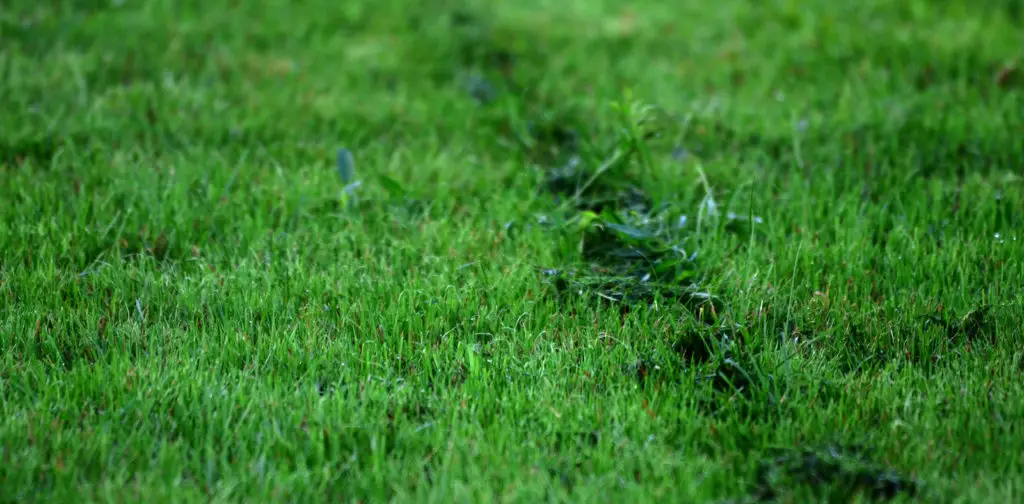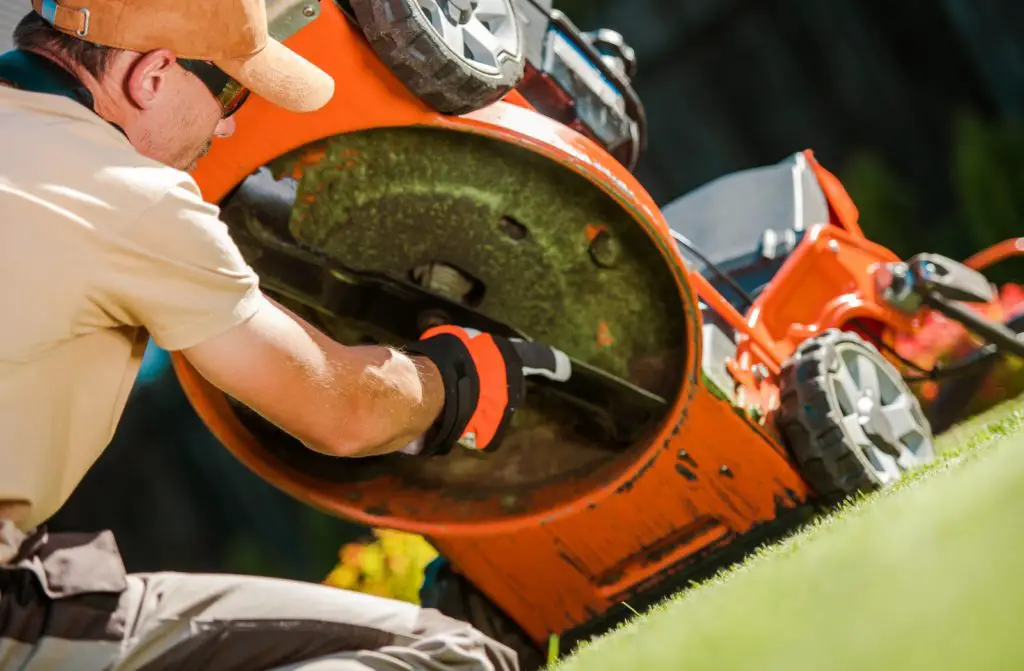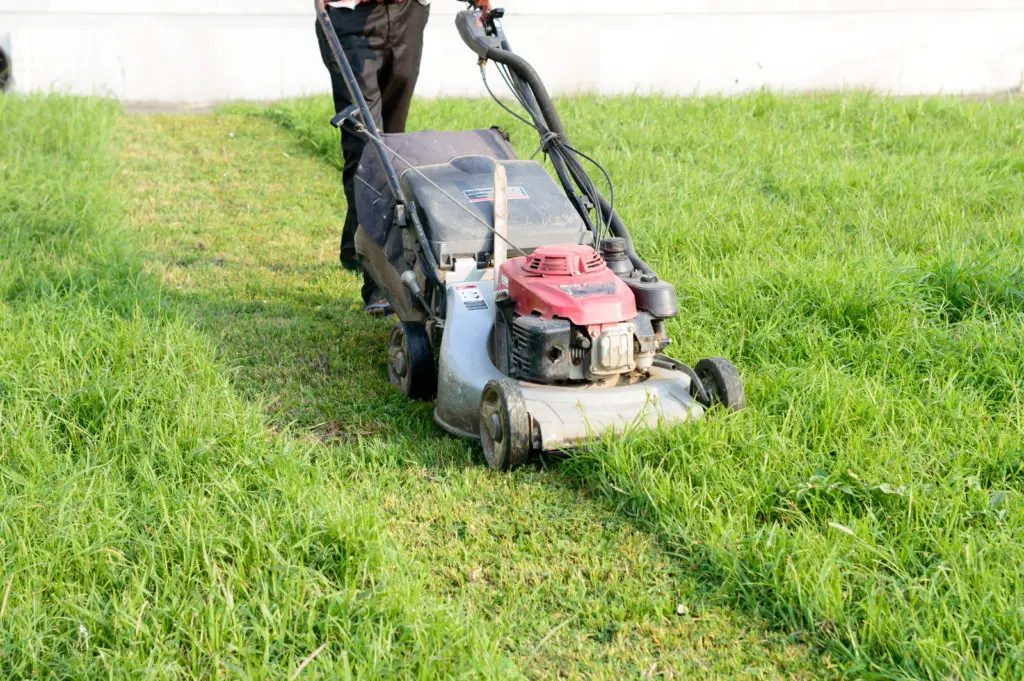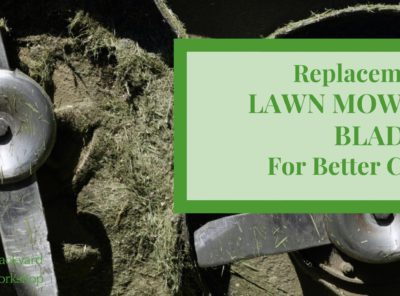Help! Why Is My Lawn Mower Leaving Uncut Grass?

Since you are at this article, I’m assuming you’re finding yourself in the following situation: Despite my best effort, my lawn mower leaves strips of uncut grass on my yard! Why is my top lawnmower leaving ugly uncut lines- that’s not my intention? Is this a case of user error or a faulty machine?
The next time you mow your lawn, check to see if any of these issues apply to your situation. They are the main areas to address if you want to avoid leaving uncut grass and mower lines. First, distinguish if the cause is an operator error or the lawnmower, and then apply the solution to fix the problem.
Why Does My Lawn Mower Leave Lines?

Lawn Mower Blades Troubleshooting
Dull Blades – It happens Over Time
Is the lawn mower blade sharp enough for a perfect cut? Avoid mowing with blunt blades; it cuts unevenly, leaves an uncut strip, tears grass blades, and leaves wounds. The torn grass blades take longer to heal, making them more susceptible to fungal infections, diseases, and starvation through water and nutrient loss.
Check the mower blade before cutting the grass and keep the edge sharp; it’s part of regular maintenance. A dull mower blade is a normal consequence of mowing wear and tear and is easily rectified by sharpening the blades. You’ll immediately see the difference when mowing with a sharp blade.
Cutting Blade Damage
A damaged blade causes havoc on the lawn and causes a terrible vibration that shoots up the operator’s arms. Turning 50 times a second and 200 mph at the blade tip, it’s no surprise that even hardened steel blade tips break, and the entire blade bends when it hits something hard like stones, toys, branches, and other debris.
Clearing the yard before mowing will help reduce these occurrences. Avoid repairing a warped, broken, or bent blade; instead, replace the blade, the bolt, and the washer.
Worn Blades
While related to dull blades, it’s not exactly the same culprit. Blades rarely last longer than four seasons of cutting grass – and even shorter if you cut on a more aggressive schedule. An easy way to determine if worn mower blades and blade tips are the reason for the mower leaving streaks of uncut grass is to check the leading edge.
The blade’s cutting edge is 3-4 inches close to the blade tip on the leading side of the blade. It’s easy to see if the leading edge is worn, and the operator will notice grass streaks and less efficient stuffing of grass clippings in the bag. Always replace worn blades with the same blade angle as the original blades.

Use The Correct Blade!
When replacing the original blades with aftermarket blades, the new blades cause an uncut strip of grass. Selecting the correct sized blade is a problem when the aftermarket blades’ model numbers don’t match the lawnmower model. The original blade has changed shape from wear and tear, making it challenging to compare shape and size for new blades.
The solution is to purchase a spare set of blades matching the original blades before wear and tear change the blade’s shape. Alternatively, a person will have to exchange the aftermarket blades until they find the correct ones and then note the aftermarket blade model number for future reference.
Blade Installation Errors
If the wrong size blades or the blades are installed upside down, the mower operates incorrectly, causing streaks of grass clumps. Check out our guide for advice on how to install a replacement lawn mower blade easily.
Engine Performance
Engine Speed
Failing engine power could be the cause of grass stripes and patchy areas. Blades that don’t rotate at optimal speed cannot cut grass sufficiently. Mowing at too low speed leaves an uncut grass row. Some riding mowers are designer to mow at a high throttle; over time the operator can damage the mower engine if cutting is done with the motor running at too slow a pace.
Of course, the actual speed of the lawn mower matters too. Mowing while moving too fast can also cause patchy, uncut areas. You need to keep the engine throttle high enough to deliver enough power while being careful not to race around your yard too fast in order to get a clean cut.
Engine Fuel
Avoid using last season’s fuel or keeping fuel unused for longer than a month in the carburetor. Old fuel gets stuck in the engine resulting in poor engine performance. Clean the air filter every 25 hours and the oil every 50 hours for optimum effect.
Mower Deck Problems
Mower Deck Design
For correct airflow and preventing vacuum leaking problems, the front part of the cutting deck should be lower than the rear lip in a floating deck design mower. Vacuum leaks can also cause bare spots, especially with higher cutting settings.
Mower Deck Leveling
If your riding mower pushes grass clippings to the side instead of in the bin, it could be an incorrect deck adjustment for the model tractor. Improper deck adjustment on a rider mower may result in a vacuum imbalance, causing air flow to push outward from the front cutting deck.
Deck Wheels
Missing or wrong anti-scalp wheels on tractor mowers can be the problem. On a level surface, the anti-scalp wheels shouldn’t touch the ground. Deck wheels set at different heights or low tire pressure will also leave a row of uncut grass.
A Dirty Deck Can Cause Issues
A clogged deck can slow the engine speed and leave a row of uncut grass. Clean the mower after each session to avoid clogging of grass clippings, dirt, and small stones on the deck underside.
Before cleaning the mower deck, cut the engine and remove the spark plug wire from the spark plugs. Be careful not to cut your hands on blades when cleaning the deck.
Operator Error Leaves Mower Lines
Incorrect Overlapping
Riding Mower Cutting Overlap
Irrespective of the lawnmower you use, the correct way to cut the lawn is in rows. To avoid leaving grass strips between rows, it is common practice to overlap each row with 1-2 inches.
Tire Trails Cutting Overlap

You can cut perfectly straight lines with a push or riding mower, but you leave a line of uncut grass if the adjacent rows don’t overlap. Overlapping the previous strip ensures you cut over the tire marks left by the lawnmower wheels.
The mower tires push down the blades of grass with each pass, and the area between the mower blades and tires isn’t cut. Each time you line up the tires with the previous pass, you push the grass further down without getting cut. Avoid this by overlapping the tire width with each pass.
Mowing Hurriedly Or At The Wrong Time
If you’re in a hurry because you don’t have much time or you want to get it done to watch a game, you could be mowing the lawn too quickly. Uncut lines and clumps arise when you aren’t focused on mowing straight lines operating the mower engine at full throttle.
Being in a hurry could waste more time; you miss grass blades or clumps of grass and have to go back and mow the areas already mowed. Take the time to mow at the right speed focusing on cutting straight lines. Doing it right can reduce how often you need to mow your lawn.
Also keep in mind there are times of the day you should – and shouldn’t – mow your lawn. Pick one of the best times of the day to mow grass to help make straight lines.
Purposeful Mowing Patterns
Mowing patterns with lawn stripes and lines give the illusion of a perfect lawn; it hides weeds and dry spots. Although commonly used to cut golf course turf, some homeowners like the lush, patterned effect of light and dark stripes.
Lighter and darker lawn stripes happen when mowing the lawn in a back and forth direction; the sunlight on the grass blades bent into opposite directions creates the lawn striping patterns.
The longer, flexible blades of cool-season grasses work better for striping than the shorter, more rigid warm-season grasses. Even basic patterns should change each season for a healthy lawn. Stimulate grass growth by alternating between a straight line, diagonal pattern, or get the neighbors talking with a checkerboard effect.






![The Best Lawn Mowers - Reviewed in [FYear]](https://www.backyardworkshop.com/wp-content/uploads/./lawn-mower-reviews-400x296.jpg)